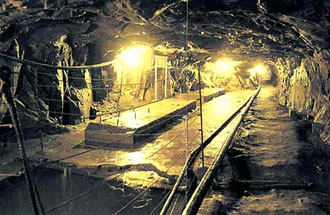North Korea is prepared o send 30,000 crack commandos streaming into Seoul using over a dozen secret tunnels that have not yet been discovered, according to a S. Korean considered a expert on N. Korean tunnel warfare.
The South has uncovered four N. Korean invasion tunnels between 1974 and 1990, but 13 more have been built since then, claims tunnel expert Lee Jong-chang. The tunnels, which are thought to have been drilled about up to several hundred feet below the surface, are said to link N. Korea directly to various Seoul metro stations, a distance of about 38 miles.
S. Korean military officials reject the possibility of that many undetected tunnels, arguing that Lee’s detection methods are unscientific. Lee has argued that he has used his techniques to locate hot springs and groundwater.
Each such tunnel could allow up to 30,000 elite N. Korean commandos to bypass S. Korea’s military defenses and emerge among the South’s undefended civillian population, according to some experts. The use of tunnels would pose a threat as formidable during the first days of any future Korean war as the over 10,000 artillery pieces aimed at Seoul.
At least some of the four tunnels discovered in the past have been wide enough to allow tanks and artillery to participate in an underground invasion. Three were discovered by S. Korea in the 1970s and the fourth in 1990. Those tunnels were all relatively short, however. The longest — discovered in October of 1978, extended only about 1,100 meters (3,400 feet) south of the Military Demarcation Line (MDL) separating the two Koreas. It was bored through solid bedrock at a depth of about 73 meters (230 feet). It was wide enough to move about 30,000 troops and field artillery in a single hour to a position about 44 kilometers (27.5 miles) from Seoul.
The North attempted four separate tunnel invasions since the Korean War ended with an armistice in July of 1953, according to one S. Korean military source.
In recently exchanged rhetoric the US Joint Chiefs of Staff has warned Pyongyang that nuclear, as well as conventional, weapons may be used against an invasion force. While boasting that the US nuclear umbrella can’t protect S. Korea from destruction at the hands of the North, Pyongyang has demanded an apology from the US for what it characterizes as a nuclear threat as one of several preconditions to resumption of dialogue.
S. Korean president Park Geun-hye is scheduled to visit the US on May 7 to meet President Obama, in part to discuss a response to the N. Korean threat.


